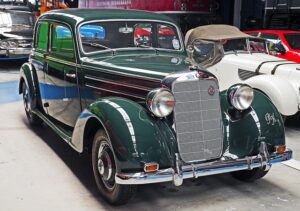Introduction
The steering wheel of a ship is an essential component that allows the captain or helmsman to control the vessel’s direction. It is a crucial part of the ship’s navigation system and plays a significant role in ensuring the safety and maneuverability of the ship. In this article, we will explore in-depth what the steering wheel of a ship is called and how it functions.
What is the Steering Wheel of a Ship Called?
The steering wheel of a ship is commonly referred to as the “ship’s wheel” or “helm.” These terms are often used interchangeably to describe the same component. The ship’s wheel is typically a large circular device mounted on a vertical spindle, allowing it to rotate freely. It is usually located on the bridge or wheelhouse of the ship, where the captain or helmsman can easily access and control it.
Function and Operation
The primary function of the ship’s wheel is to control the rudder, which is responsible for changing the ship’s direction. When the captain or helmsman turns the ship’s wheel, it transmits the movement to the rudder through a series of mechanical linkages or hydraulic systems. This, in turn, causes the rudder to deflect, redirecting the flow of water and altering the ship’s course.
The ship’s wheel is connected to the rudder through the steering mechanism, which can vary depending on the type and size of the ship. In smaller vessels, the wheel is often connected directly to the rudder stock, allowing for a direct transfer of motion. In larger ships, however, the wheel is connected to the rudder through a complex system of gears, chains, and hydraulics to provide the necessary power and control.
Types of Ship’s Wheels
Ship’s wheels come in various designs and sizes, depending on the type of ship and its historical era. Some common types of ship’s wheels include:
Spoked Wheels: These are the traditional ship’s wheels with multiple spokes radiating from the center hub. They are often associated with classic sailing ships and give a distinct nautical appearance.
Teak Wheels: Teak is a popular choice for ship’s wheels due to its durability and resistance to saltwater corrosion. Teak wheels are commonly found on modern vessels, providing a sleek and polished look.
Modern Electronic Wheels: With advancements in technology, some modern ships have replaced traditional ship’s wheels with electronic control systems. These systems use joysticks or touchscreens to control the ship’s direction, eliminating the need for a physical wheel.
Conclusion
The steering wheel of a ship, also known as the ship’s wheel or helm, is a crucial component that enables the captain or helmsman to control the vessel’s direction. It is connected to the rudder through a complex system of linkages or hydraulics, allowing for precise maneuverability. Ship’s wheels come in various designs and sizes, ranging from traditional spoked wheels to modern electronic control systems.
References
– Britannica: www.britannica.com/technology/ship-navigation
– Marine Insight: www.marineinsight.com/naval-architecture/steering-gear-on-ships-construction-and-working













